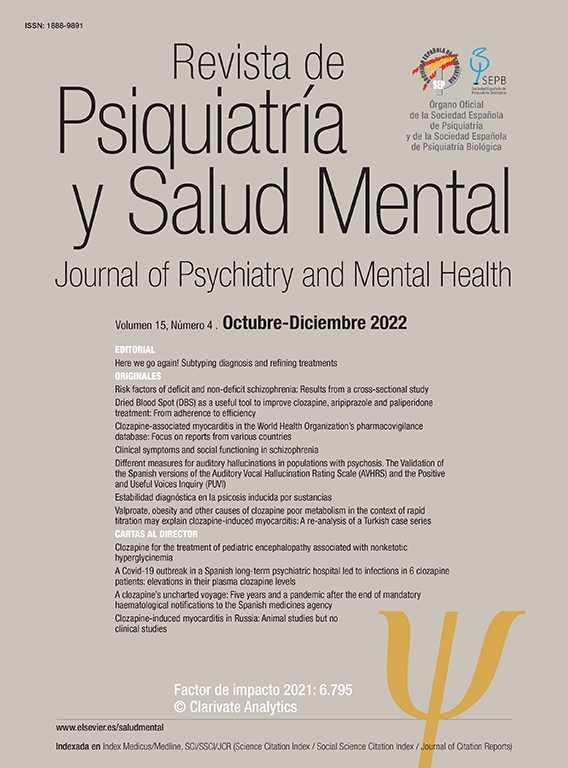It is well-known that suicide is an important cause of death. A number of studies have proposed several risk factors affecting suicides such as socioeconomic, demographic and psychiatric illnesses.1 Beyond that, there is evidence that suicide rates may be affected by environmental drivers. The temperature has been studied as the main parameter in various models, as different associations have been identified in different countries.2 Previous studies in Greece were conducted either in one city or for shorter periods.3 Thus, in order to elucidate the impact of temperature on suicide rates, the association between the aforementioned was studied for a long period in Attiki, the prefecture of the Greek capital.
Monthly aggregated suicide cases and the estimated population were provided by the Hellenic Statistical Authority for the period 1981–2018 (456 months), whereas temperature and relative humidity were obtained from the National Observatory of Athens for the Thiseio station (2008–2018) and from the Hellenic National Meteorological Service for the Elliniko station (1981–2018). Weather data was required to have 67% complete information to be included in the analysis. Thus, the missing values of temperature for the period 2012–2014 were imputed as the values of Thiseio's measurements multiplied by a factor equal to the average of monthly ratios of Elliniko's values over the corresponding values of Thiseio's for the period 2008–2011. Humidity values were imputed for the period 2012–2018 by the same procedure.
The association between suicide and temperature was investigated with Poisson regression controlling for seasonality and long-term trends with dummy variables for each month and each year (1981–2018), respectively. The exposure-outcome relationship was assessed by using natural cubic splines up to seven degrees of freedom(df) and the natural logarithm of the exposure in order to identify possible nonlinear associations. The Akaike Information Criterion (AIC) was used in order to choose the best fit between the models. The analyses indicated the linear model as a better fit. Consequently, the associations were analyzed (total and separately by sex) under the assumption of linearity. The potential confounding effect of other environmental parameters was addressed by introducing relative humidity as a natural cubic spline with three df in the models. The aforementioned relationship was further assessed by dividing the sample into a cold (October–March) and a warm semester (April–September).
In total, 4286 suicides were included; 3432 were men (80%) and 854 women (20%). Detailed descriptive statistics are presented in Table 1.
Descriptive statistics for suicide & meteorological parameters in Attiki, Greece.
| Mean | SD | P25 | P50 | P75 | Max | |
|---|---|---|---|---|---|---|
| Suicide | ||||||
| Male | 7.52 | 3.74 | 5.00 | 7.00 | 10.00 | 29.00 |
| Female | 1.87 | 1.54 | 1.00 | 2.00 | 3.00 | 8.00 |
| Temperature (°C) | 18.36 | 6.62 | 12.28 | 17.86 | 24.47 | 30.58 |
| Humidity (%) | 61.19 | 9.19 | 55.61 | 63.70 | 69.72 | 80.40 |
P25: 25th percentile, P50: 50th percentile, P75: 75th percentile, SD: standard deviation.
As Table 2 shows, an increase per 1°C in ambient temperature led to a statistically significant increase in suicides all year around. In warm months, the temperature effect on suicide was prominent in female subgroup, as 1°C increase in temperature led to 17% rise in suicides. Men seemed to be affected all year around, but not in any particular semester. Temperature estimates in cold months failed to reach statistical significance in any group.
Percent changes (%) & 95% confidence intervals (CI) in monthly suicides per 1°C temperature increase for the period 1981–2018 in Attiki, adjusted for time trends and seasonality.
| Temperature | |||
|---|---|---|---|
| Cold months | Warm months | All year around | |
| Men | 3 (−1.4 to 7.5) | 2.7 (−3.1 to 8.7) | 3.7 (0.4–7.1) |
| Female | 3.3 (−5.2 to 12) | 17 (4.4–32) | 7 (0.6–14) |
| Total | 3.2 (−0.7 to 7.2) | 5.3 (0.1–10.9) | 4.4 (1.4–7.5) |
Bold: p values<0.05.
A positive linear relationship between suicides and temperature was found during a period of 38 years in Attiki. This finding is consistent with previous literature, which proposed that, unlike U or J-shaped mortality – temperature associations, suicides seemed to follow a linear relationship across different countries, suggesting that a rise in temperature exacerbates suicides.2,4 Probably, a distinct pathophysiological mechanism exacerbates heat tolerance via serotonin and catecholamines which regulate affection. According to central fatigue hypothesis, these molecules are also implicated into thermoregulation, mainly in hypothalamus.5 In rats, a 3,4-Methylenedioxymethamphetamine(MDMA)-mediated increase in dopamine and serotonin concentration was associated with a body temperature rise,6 while norepinephrine was negatively correlated with outside temperature in healthy human subjects.7
Besides thermoregulation, it seems that hypothalamic–pituitary–adrenal axis (HPA) is dysregulated in both suicide and depression.8 Depressed patients appeared to have increased plasma and cerebrospinal fluid levels of cortisol and corticotropin-releasing hormone.8 Similar evidence exists for suicide committers.8 Nevertheless, it has been shown that temperature rise results in a cortisol increase in human serum,9 a finding that could infer that temperature increase exacerbates further the HPA axis in both sexes all year around. Furthermore, it seems that females’ HPA axis secretes stress hormones more rapidly and in greater amounts than men's,10 possibly explaining the higher increase in female suicides during warm months.
As global warming prevails, a steady rise of ambient temperature is expected.11 It is reasonable to hypothesize that a global temperature increase could lead to excessive, but otherwise preventable, suicides. Policy-makers should consider seriously the effects of global warming and act accordingly by accounting all the aspects of the problem, so as better prevention strategies to be shaped and implemented.
We thank ELSTAT for providing the monthly data for suicides and the National Observatory of Athens and the Hellenic National Meteorological Service for the weather data. We also thank Byron Asimakopoulos for his insightful comments and Evlampia Mavropoulou for the linguistic refinement of the article.









